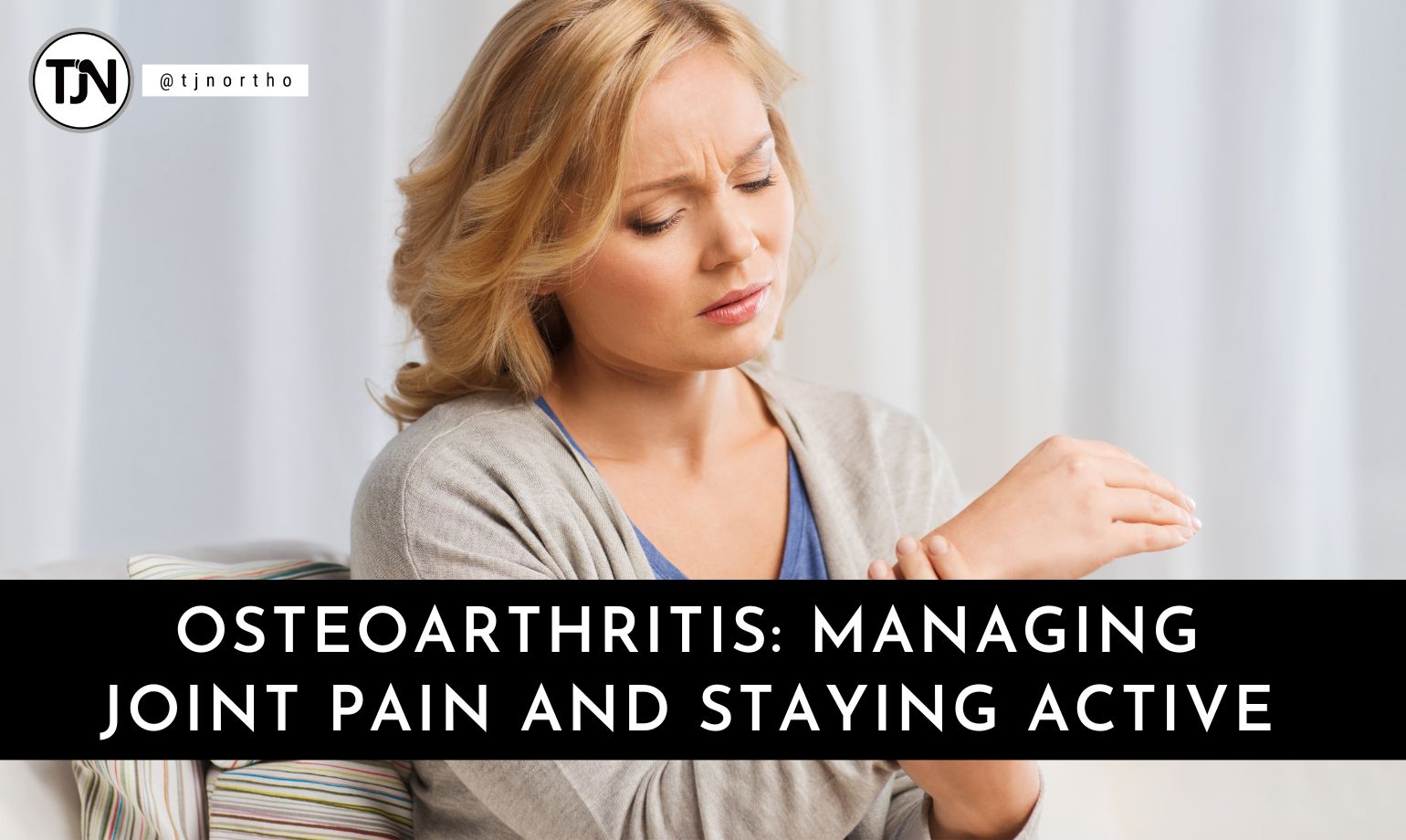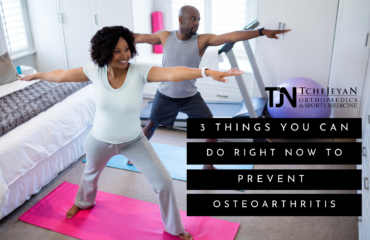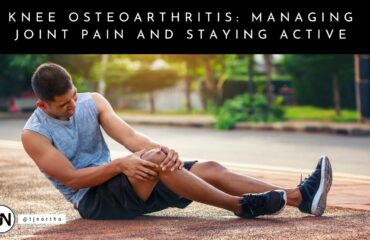Osteoarthritis (or OA) affects millions of people worldwide. As an orthopedic surgeon, Dr. T at Tchejeyan Orthopaedics and Sports Medicine in Thousand Oaks is passionate about helping people understand this condition and providing guidance on managing it effectively.
Osteoarthritis is not a specific disease but a degenerative condition characterized by the gradual breakdown of the cartilage covering the ends of bones at the joints. This cartilage acts as a cushion, allowing for smooth and painless joint movement. When it deteriorates due to age or overuse of the joint, bones may rub against each other, leading to inflammation, pain, stiffness, and loss of mobility. Most people with OA notice it in the knee, hip, hand, and spine joints.
When you develop OA, however, there is hope for some relief. Both lifestyle adjustments and medical intervention can help you manage osteoarthritis, and the therapy that is right for you will depend upon the degree of severity of your OA.
Symptoms of Osteoarthritis
The hallmark symptoms of osteoarthritis include:
- Pain: Osteoarthritis-related pain is typically a dull ache that increases with activity and decreases with rest. It can be intermittent or persistent, and it often disrupts daily life.
- Stiffness: Joints affected by osteoarthritis can become stiff, making moving or performing simple tasks difficult. Morning stiffness is a common complaint.
- Limited Range of Motion: As OA progresses, the affected joints may lose flexibility, limiting their normal range of motion.
- Swelling: Inflammation can lead to joint swelling, causing further discomfort.
- Grating Sensation: Some people with osteoarthritis report a grating or grinding sensation when moving the affected joint.
Development of Osteoarthritis
While the exact causes of osteoarthritis are sometimes difficult to pinpoint, several factors contribute to its development. These factors include:
- Age: Osteoarthritis is more common in older adults, as the wear and tear on joints accumulate over time.
- Overuse: People who have stressed their joints throughout their lifetimes will often develop osteoarthritis or develop it early. For example, athletes and people who do intensely physical jobs – floor installers, carpenters, and delivery drivers – are more likely to develop arthritis.
- Genetics: Family history can play a role in susceptibility to osteoarthritis, suggesting a genetic component.
- Joint Injuries: Previous joint injuries or trauma can increase the risk of developing OA in the affected joint.
- Obesity: Excess weight stresses joints, particularly the knees and hips, increasing the likelihood of developing osteoarthritis.
Managing Osteoarthritis through Lifestyle Adjustments
Living with osteoarthritis requires proactive lifestyle adjustments to alleviate pain and maintain mobility. Here are some practical strategies to consider:
- Maintain a Healthy Weight: When you are overweight, excess pounds can significantly strain your joints, particularly the knees and hips.
- Exercise Regularly: Low-impact exercises like swimming, cycling, and walking strengthen muscles around the joints and improve joint flexibility. Your physical therapist or trainer can help you develop a tailored exercise plan.
- Protect Your Joints: Use assistive devices like canes or braces to reduce stress on affected joints. Proper ergonomics at home and work can also make a big difference.
- Hot and Cold Therapy: Applying heat or cold to sore joints can provide temporary relief. Warm baths or heating pads can ease stiffness, while cold packs can reduce inflammation.
- Medications: Over-the-counter pain relievers like non-steroidal anti-inflammatory drugs (NSAIDs) (acetaminophen, ibuprofen) can help manage pain and inflammation. However, long-term use can have adverse health effects, so these pain-relievers are not a suitable long-term solution.
Medical Interventions for Osteoarthritis
Various medical interventions are available for individuals with more advanced osteoarthritis or those who do not find relief through lifestyle adjustments alone.
The least invasive form of treatment is physical therapy. A physical therapist can instruct patients on exercises and techniques that improve joint function and help manage pain. However, this is often a temporary solution and may not be sufficient to relieve a patient of OA’s long-term and debilitating effects.
The next level of therapy is injections. Corticosteroid injections can often provide temporary relief from pain and inflammation. Hyaluronic acid injections may also provide cushioning for the affected joint. However, injections do not always work for all patients. Moreover, even when they do work, the effect is sometimes short-lived, and there is a limit to how often you can receive injections. For many patients with OA, injections serve only as a stop-gap measure to delay more invasive medical intervention.
In severe cases of osteoarthritis, surgical interventions like joint replacement surgery may be necessary. In this procedure, the damaged joint is replaced with an artificial one, providing lasting pain relief and improved joint function. While joint replacement procedures are generally successful, some people hesitate to take this step. The recovery period for joint replacement is lengthy and requires physical therapy to restore strength and mobility. However, prosthetic joints last a long time, and joint replacement often provides the most effective remedy for OA.
Osteoarthritis can be challenging, but it’s important to remember that there are effective ways to manage it and maintain or restore an active lifestyle. Whether you’re dealing with mild discomfort or severe joint pain, seeking the appropriate treatment is crucial.
If you suspect you may have osteoarthritis or are struggling with its symptoms, don’t hesitate to contact TJN Ortho for a consultation. Our experienced professionals are dedicated to treating osteoarthritis and helping you regain control of your active life. Contact TJN Ortho and take the first step toward a pain-free future today.



